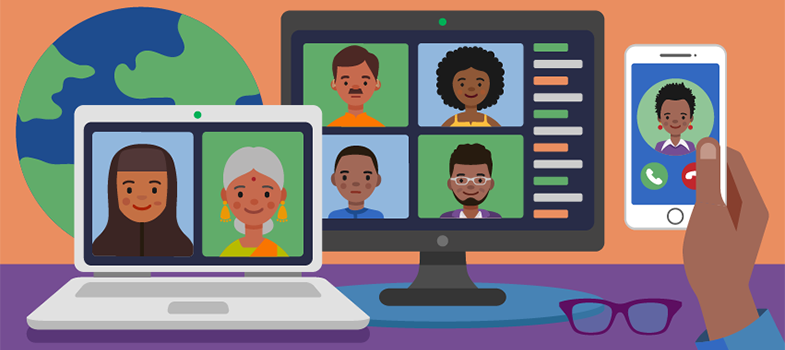Glossary of important terms and concepts
A | B | C | D | E | F | G | H | I | J | K | L | M | N | O | P | Q | R | S | T | U | V | W | X | Y | Z | ALL
A |
|---|
B |
|---|
blended learning/trainingA course that includes both online and face-to-face elements, and sometimes also practical or fieldwork elements. | ||
browserSoftware that enables access to the internet from a computer, tablet or smartphone. Examples include Google Chrome, Safari, Firefox and Microsoft Edge. | ||
C |
|---|
communities of practiceGroups of people who share a concern or a passion for something they do and learn how to do it better as they interact regularly. | |
copyrightThe legal right of the author or originator of any published piece of work (text, image, video, music etc.) to copy or reproduce that work. | |
Creative Commons licencesAn internationally recognised system whereby authors grant permission to others to use or adapt their work with specified conditions. | |
F |
|---|
face-to-faceA conventional teaching or training setting where learners/students are in the same room as the trainer/teacher and therefore face to face with each other, as opposed to online training where they are remote from each other. | |
flipped classroomThe reverse of the traditional learning environment where knowledge is delivered by teachers to students in the classroom and homework and other activities are done elsewhere. In the ‘flipped’ classroom, learning material is delivered online in advance and the classroom becomes the space for students and teachers to discuss the material, apply their learning and engage with each other in a more active and focused way. | |
I |
|---|
ice-breaker activitiesSimple introductory activities that encourage all participants to contribute to conversation and communicate comfortably with each other. | |
O |
|---|
OER repositoriesOnline collections of educational materials that are freely available for others to reuse or adapt. | |
Open Educational Resources (OERs)Learning materials that are freely available in the public domain and are specifically licensed for reuse without cost. | |
P |
|---|
peer-to-peerInteraction between people of equal status, for example between fellow participants on a training course rather than between the trainer and trainees. | |
personasDescriptions of learners that outline their key characteristics and circumstances as presented to or as perceived by others. Intended to help make the learners more real and memorable for the trainers and designers of the training. | |
S |
|---|
screencastA recording available online that shows a computer screen with some sort of onscreen activity, usually with a voiceover. | |
synchronous learning/training/sessionWhere the trainer or teacher is present at the same time as the learner(s). This is almost always the case in a face-to-face environment but can also take place online through the use of video conferencing and live chat or instant messaging. As with the face-to-face environment, the learners in synchronous online learning can ask questions in real time. | ||
V |
|---|
video conferencingTechnology that enables online meetings, training events, presentations and webinars. With audio and video facilities, video conferencing allows communication by voice, vision and text messaging involving anything from two to many people. May include additional features such as screen sharing, breakout rooms and interactive whiteboard. | |
W |
|---|
webinarA seminar, presentation, lecture or workshop that is transmitted over the internet (web). Webinars are live online teaching or training sessions that participants all attend at the same time. They can be recorded and replayed later. | ||
For further information, take a look at our frequently asked questions which may give you the support you need.
If you have any concerns about anything on this site please get in contact with us here.
